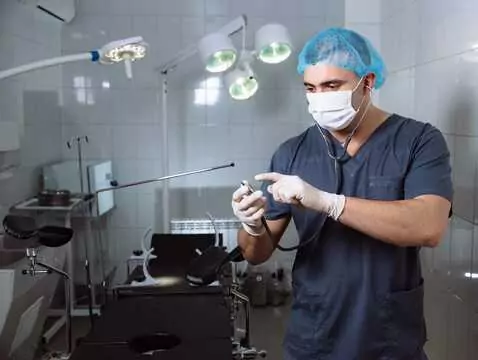The areola reduction procedure is an aesthetic medicine procedure. As with other cosmetic surgery, there are no medical indications for this type of surgical intervention - the procedure is carried out to improve the aesthetic appearance of a woman's breasts. The surgical correction in this case consists specifically of reducing the external circular halo around the nipple.
Carrying out a procedure to reduce the areolae of the nipple is not determined by age; however, problems may arise in this connection: operating on immature patients (for formal and legal reasons, uncompleted development of the mammary glands, among others), mature patients (mastopathic changes, which are a type of pathology within the mammary glands).
Before the operation, in addition to standard laboratory tests (e.g. morphology), in some cases a Medical US (ultrasound examination) or mammography of the breast is ordered.
There is a group of women who are not very suitable for this type of surgery. These include ladies:
- with pronounced mastopathic changes,
- with very large breasts,
- after numerous unsuccessful revisions in the past.
Characteristics of the procedure
The operation is carried out under local anaesthesia and lasts no longer than one hour. Before the surgery, the doctor will mark on the skin of the areola the areas that will undergo surgical intervention, in order to facilitate the exact execution of the procedure. In addition, photographic documentation is taken.
During the operation, the surgeon removes excess tissue from around the areola. The fragment of skin that surrounds the nipple is eliminated. The part that remains is then pulled inwards and sutured with absorbable sutures to achieve a permanent effect and thus prevent the areola from stretching again. The incisions are made within the areola. The resulting scars become almost invisible with time. In rare cases, a permanent suture is placed deep in the subcutaneous tissue. Its purpose is to prevent the areola from stretching even after the wound has healed.
Recovery and effects
After the procedure and over the next few days, there is a slight discomfort in the form of pain (this is relieved by oral painkillers prescribed by the doctor).
The patient goes home on the same day that the procedure took place. She returns to normal functioning after a period of several days.
The dressing is changed after two days, while the sutures are removed one week after the operation.
Important! The length of the recovery period depends on the individual patient's predisposition.
Post-operative indications:
- avoidance of physical exertion (period of 7 days after surgery),
- avoidance of heavy physical exertion (for a period of 14 days after surgery),
- use of sauna, hot baths, staying in high temperatures is not recommended (for a period of 14 days after surgery).
Important! Some patients may suffer from temporary sensory disturbances in the areolae. This symptom disappears within a few weeks after the procedure.
As with any surgical procedure, this one is subject to the occurrence of complications:
- haematoma,
- delayed healing,
- infections,
- formation of oversized scars,
- permanent sensory disturbances in the areolae.
On the subject of the effects of the areola reduction procedure, the best results are in those women who have small and medium-sized breasts and who do not have significant mastopathic changes.
How the areolae look before the procedure determines to a large extent how they will look after the surgical intervention.

photo: panthermedia
The result of the treatment is permanent. However, the aesthetic effect (change of the areola halo) can be affected to a greater or lesser extent:
- pregnancy,
- breastfeeding,
- hormonal fluctuations,
- significant weight gain,
- breast surgery.
Important! A woman undergoing this type of procedure should be aware that it is impossible to achieve a perfect shape as well as ideal symmetry of the areolae.









